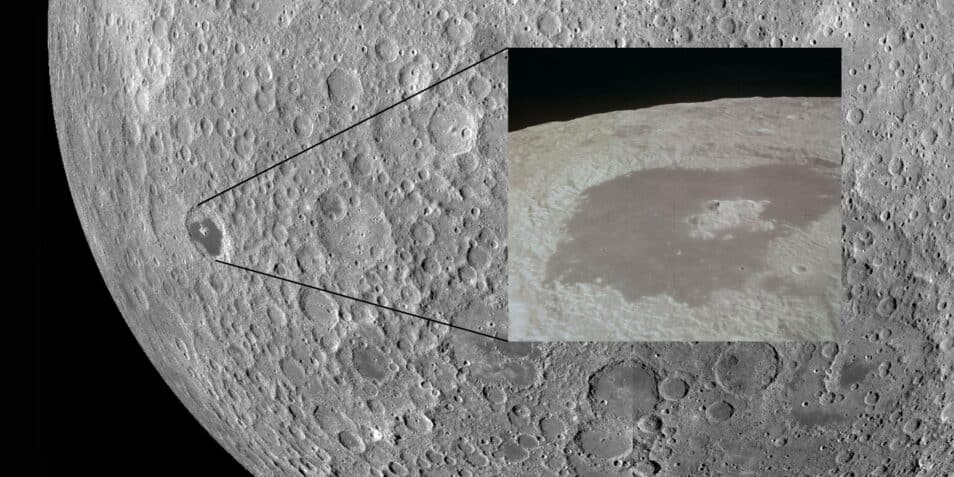This week marks the 50th anniversary of the release of Pink Floyd’s legendary album, The Dark Side of the Moon. We celebrate this with a fitting space photo of the week, an image of the far side of the moon.
Until 1959, we didn’t know what the far side of the moon looked like. That year, the Soviet probe Luna 3 flew past the Moon and we finally got a glimpse of the far side.
The Moon always looks the same from the Earth’s surface. This is because the moon’s rotation time is equal to its orbital time around the earth. This is also called synchronous rotation. It is true that the moon’s orbit is elliptical and the orbital velocity varies, so we sometimes see only a small part of the left or right side. As a result, not fifty percent, but 57 percent of the lunar surface was drawn from Earth.
The dark side? not exactly!
Back of the Moon is called “The Far Side” in English, not “The Dark Side” as the name of the Pink Floyd album. The “dark side” is incorrect, because the far side of the moon is not permanently dark. The back lights up as much as the front. When the moon is new, the opposite side of the moon is fully lit. Is the full moon? Then the back is dark.
From the faded picture to the gigantic mosaic
If you want to see the far side of the moon, you need at least a rocket. That’s why the first photo from behind wasn’t taken until 1959. There isn’t much to see in this photo. Fortunately, several spacecraft later flew to the moon. We now have a complete back map. On the right you can see a mosaic made by the Lunar Reconnaissance Orbiter. This mosaic is made up of more than 15,000 images taken between November 2009 and February 2011. This makes fine details visible on the lunar surface.
no sailor moon backpack
You may notice that there are no seas visible on the back of our natural satellite. In 2014, scientists found an explanation for this mystery. Soon after the formation of the Moon, the Earth was still a hot ball. Because the distance between the Earth and the Moon was small, the “fore” of the Moon was heated by the Earth. The far side of the Moon cooled faster, leaving minerals on the surface and thickening the crust. Then the moon was bombarded with meteorites. In the foreground they cut through the thin crust, exposing the dark basalt. Not on the back, so that there are hardly any dark spots visible there.
There are, of course, exceptions, such as the Tsiolkovsky crater. This impact crater is named after Russian scientist Konstantin Tsiolkovsky. The diameter of the crater is 180 kilometers. The central summit towers two miles above the crater floor.


“Total coffee specialist. Hardcore reader. Incurable music scholar. Web guru. Freelance troublemaker. Problem solver. Travel trailblazer.”









More Stories
Brabanders are concerned about climate change.
The “term-linked contract” saves space on the electricity grid.
The oystercatcher, the “unlucky national bird,” is increasingly breeding on rooftops.